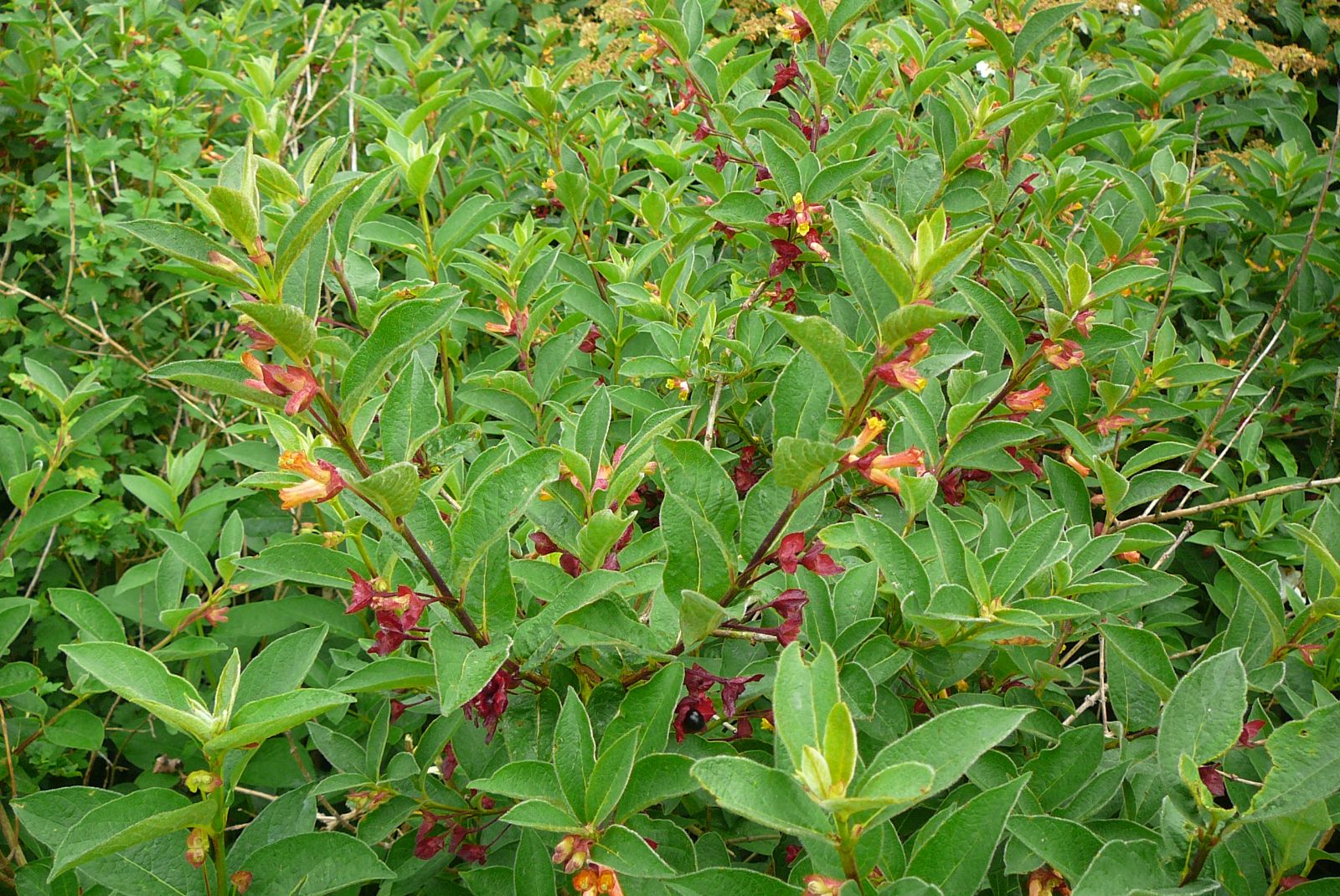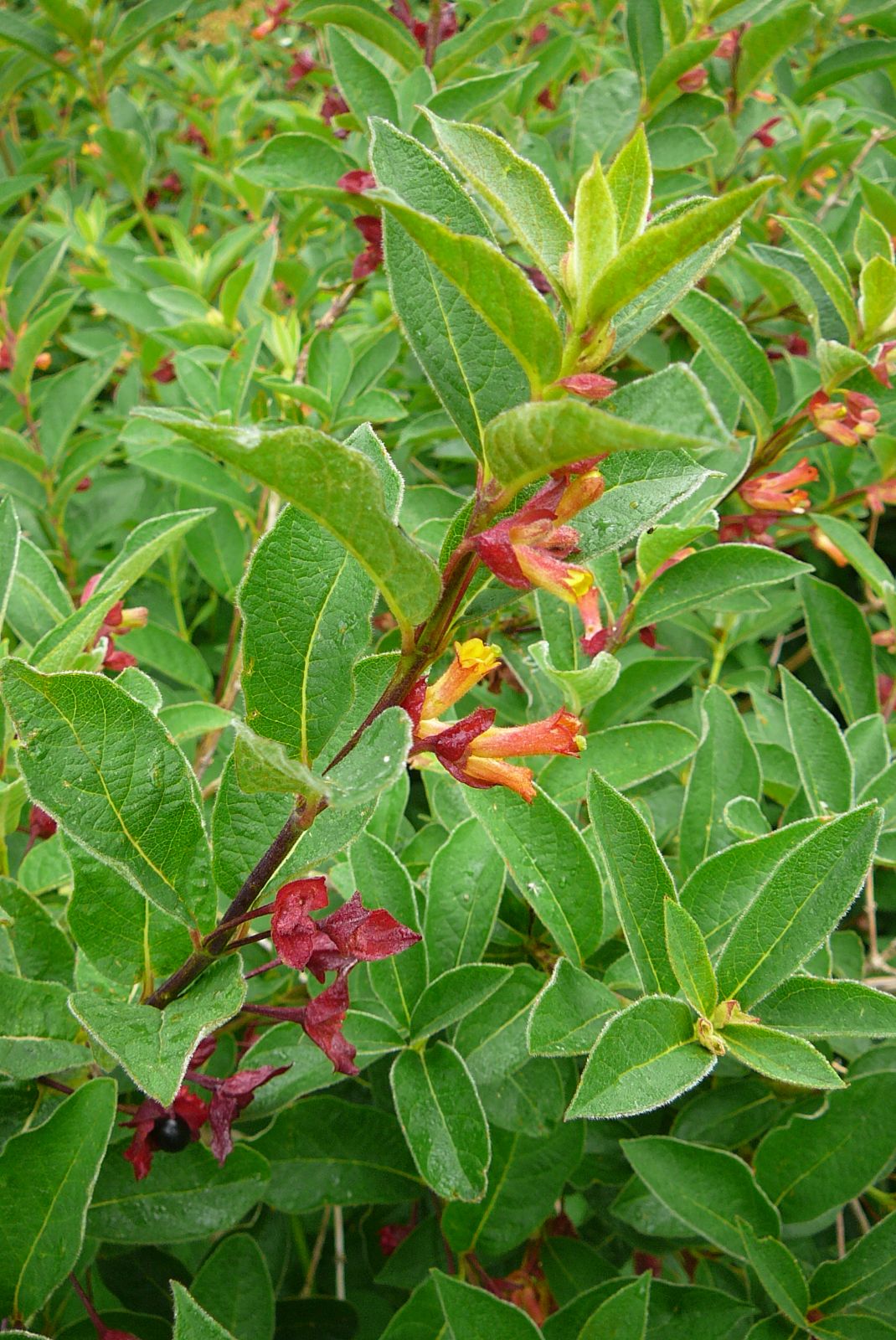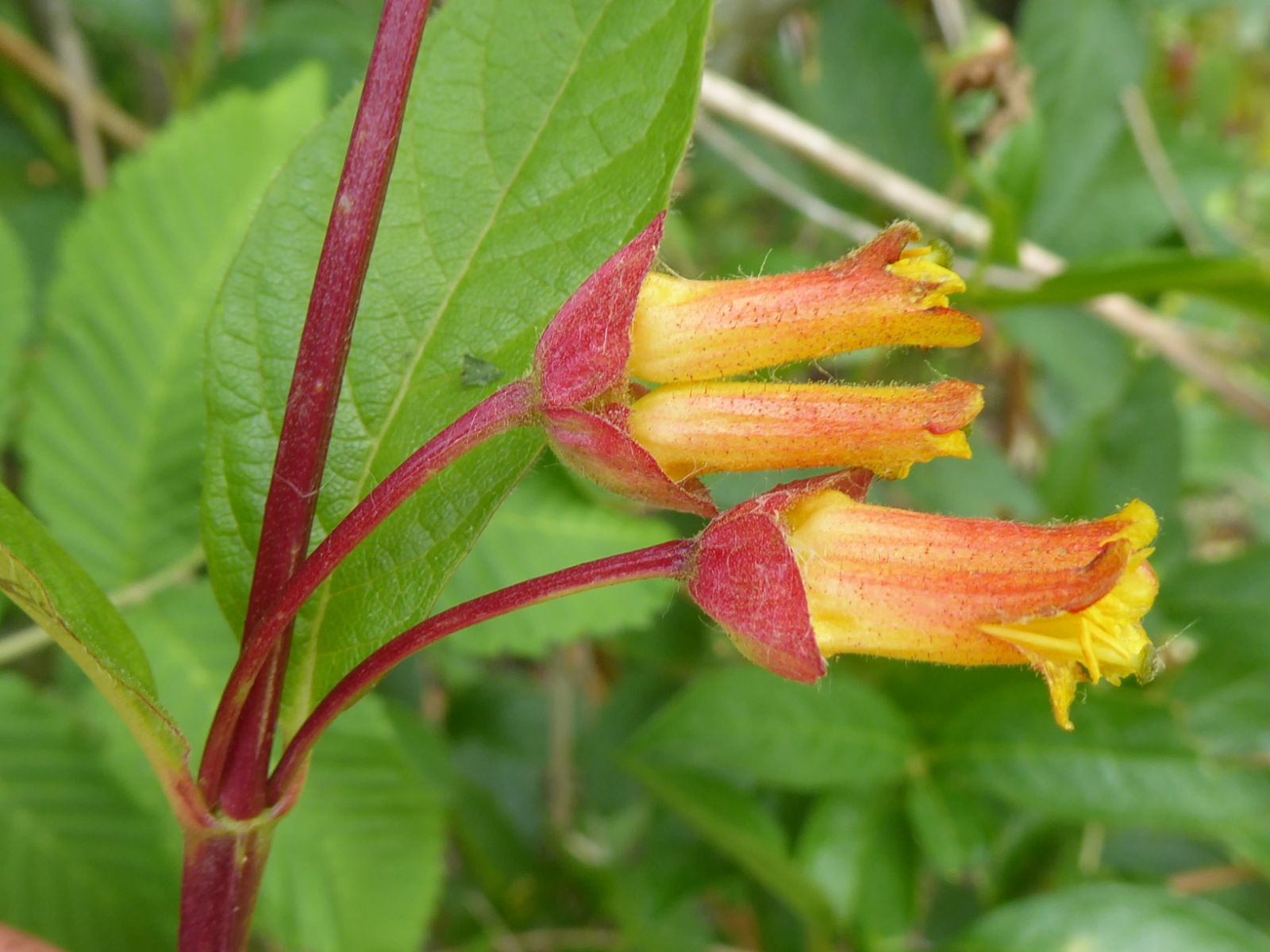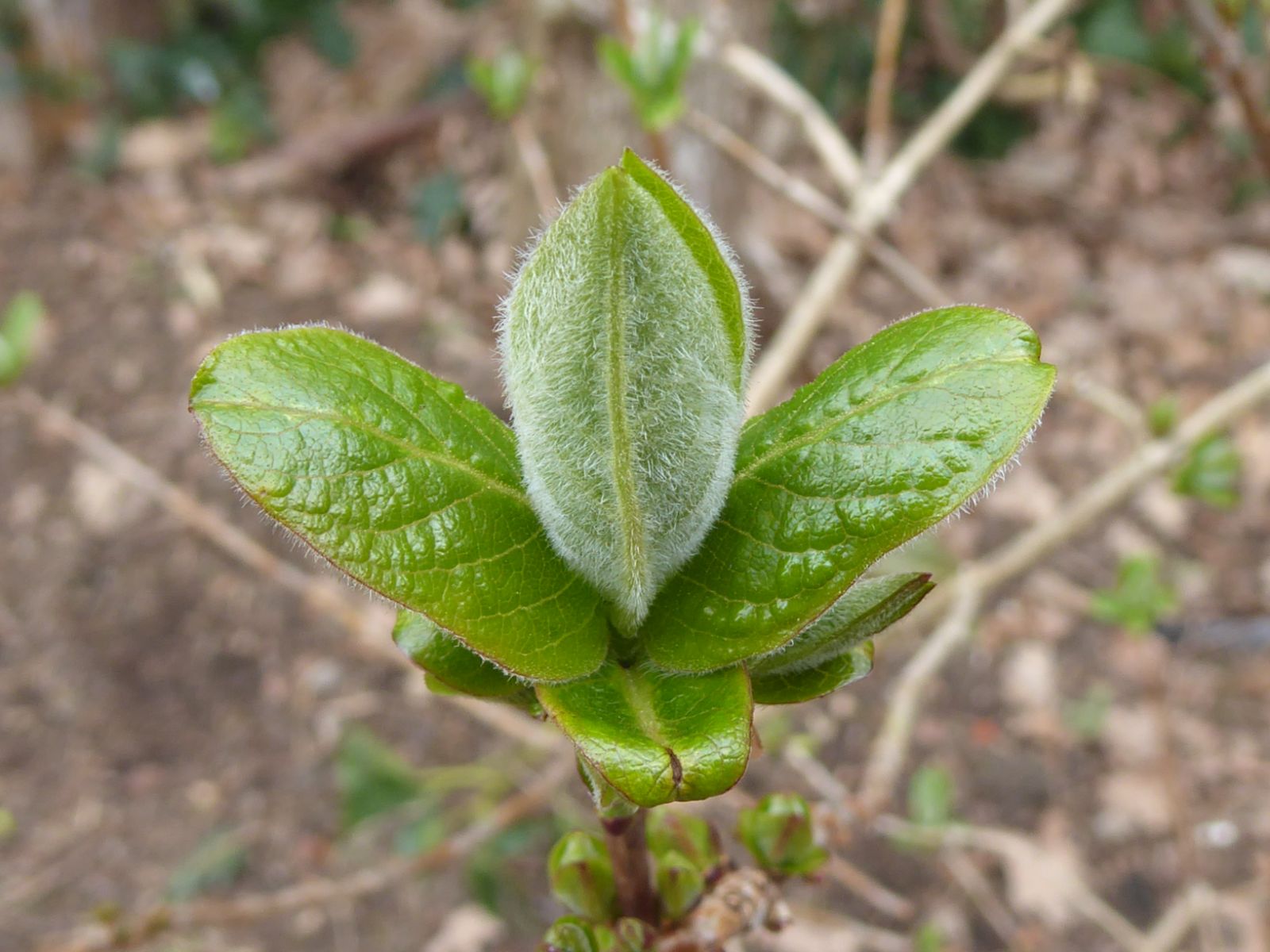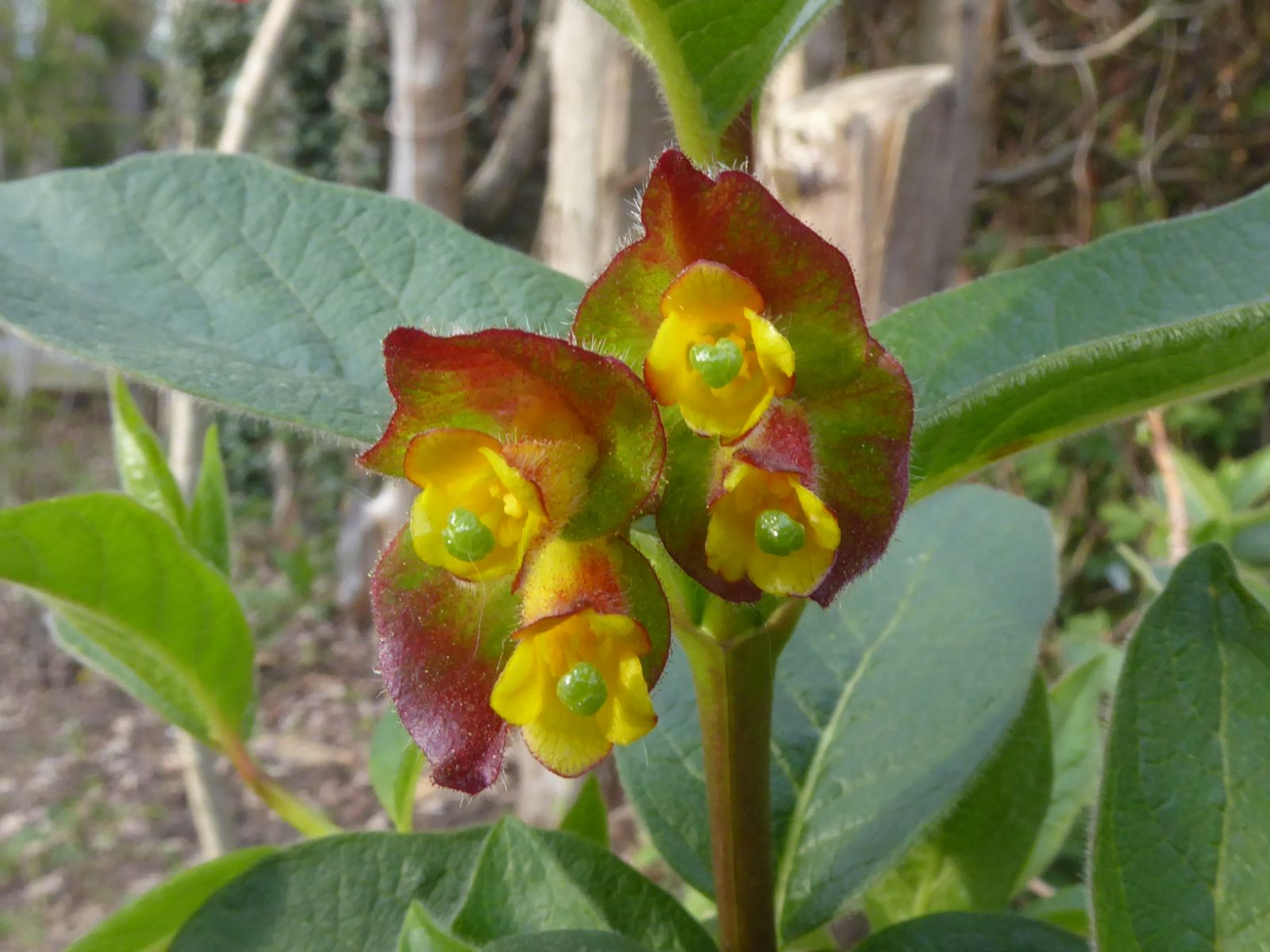Lonicera ledebourii
Credits
Article from Bean's Trees and Shrubs Hardy in the British Isles
Recommended citation
'Lonicera ledebourii' from the website Trees and Shrubs Online (treesandshrubsonline.
Genus
Synonyms
- L. involucrata var. ledebourii (Eschs.) Zab.
Infraspecifics
Other taxa in genus
- Lonicera albertii
- Lonicera alpigena
- Lonicera alseuosmoides
- Lonicera altmannii
- Lonicera × americana
- Lonicera angustifolia
- Lonicera × brownii
- Lonicera caerulea
- Lonicera caprifolium
- Lonicera caucasica
- Lonicera chaetocarpa
- Lonicera chrysantha
- Lonicera ciliosa
- Lonicera deflexicalyx
- Lonicera dioica
- Lonicera etrusca
- Lonicera ferdinandii
- Lonicera flava
- Lonicera fragrantissima
- Lonicera giraldii
- Lonicera griffithii
- Lonicera gynochlamydea
- Lonicera × heckrottii
- Lonicera henryi
- Lonicera hildebrandiana
- Lonicera hirsuta
- Lonicera hispida
- Lonicera iberica
- Lonicera implexa
- Lonicera japonica
- Lonicera korolkowii
- Lonicera maackii
- Lonicera maximowiczii
- Lonicera microphylla
- Lonicera morrowii
- Lonicera myrtillus
- Lonicera nervosa
- Lonicera nigra
- Lonicera nitida
- Lonicera periclymenum
- Lonicera pileata
- Lonicera prolifera
- Lonicera prostrata
- Lonicera purpurascens
- Lonicera × purpusii
- Lonicera pyrenaica
- Lonicera quinquelocularis
- Lonicera rupicola
- Lonicera ruprechtiana
- Lonicera sempervirens
- Lonicera setifera
- Lonicera similis
- Lonicera splendida
- Lonicera standishii
- Lonicera syringantha
- Lonicera tangutica
- Lonicera tatarica
- Lonicera tatsienensis
- Lonicera × tellmanniana
- Lonicera thibetica
- Lonicera tomentella
- Lonicera tragophylla
- Lonicera trichosantha
- Lonicera xylosteum
- Lonicera yunnanensis
A deciduous shrub of sturdy, erect habit, up to 8 or 9 ft high, and as much through; young shoots stout, four-angled, soon glabrous. Leaves ovate-oblong, rounded or narrowed at the base, pointed, 2 to 4 in. long, 1 to 13⁄4 in. wide, dull dark green above, bright green and downy beneath, margins downy; stalk 1⁄4 in. long. Flowers deep orange-yellow tinged with red, produced in pairs from the leaf axils in June, each pair on a downy stalk 1 to 13⁄4 in. long, and subtended by two large, reddish, heart-shaped bracts 5⁄8 in. wide, and two smaller ones; all glandular. These bracts grow after the flower is fertilised. Corolla downy outside, tubular, 3⁄8 to 3⁄4 in. long, 3⁄16 in. wide, with a curious sac at the base; the lobes rounded, erect; stamens not longer than the tube, glabrous or nearly so; style longer, also glabrous. Berries black. Bot. Mag., t. 8555.
Native of California in coastal localities; introduced in 1838. A robust species very distinct from all others except involucrata (see below). In habit, foliage, and the long flower-stalk it has some resemblance to L. alpigena, but the short-tubed, two-lipped corolla with spreading lobes, and the tiny, linear bracts of that species are very different. L. ledebourii grows well close to the sea.
L. involucrata (Richardson) Spreng. Xylosteum involucratum Richardson – L. ledebourii is included in this species by many botanists. According to Rehder it differs in the following particulars: smaller habit; leaves thinner, not so downy (sometimes glabrous); corollas yellow, with shorter stamens. Native of Mexico, western North America, S. Canada, and the region of the Great Lakes; introduced in 1824 (according to Loudon, the plants from this introduction grew 2 to 3 ft high). Flowers in May.

